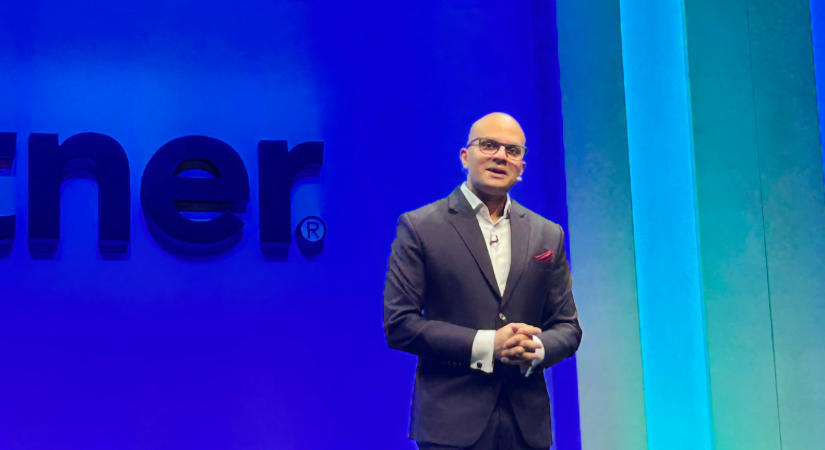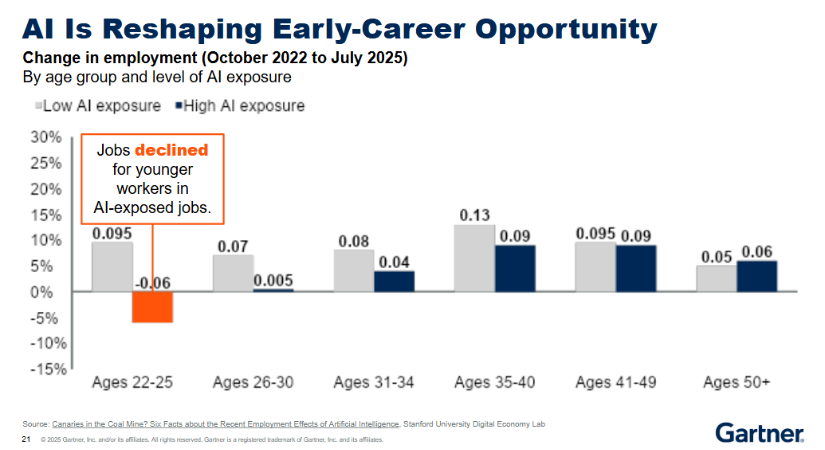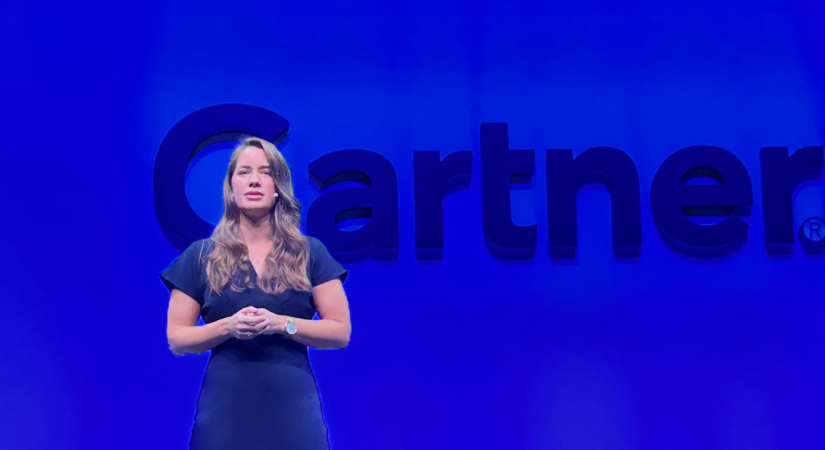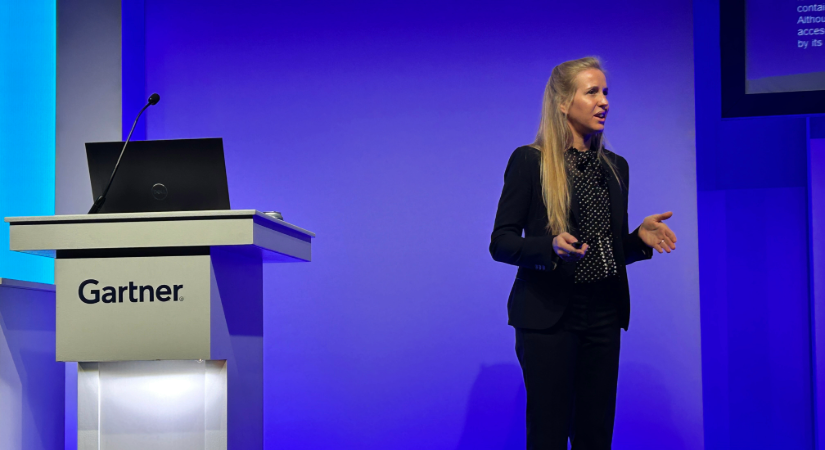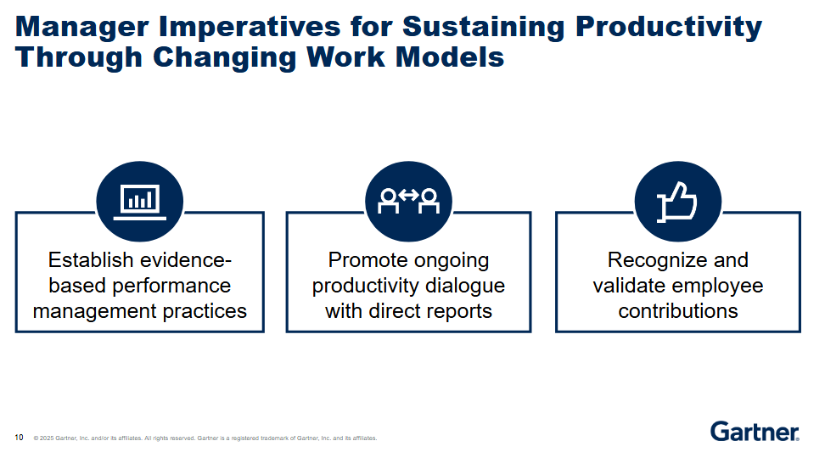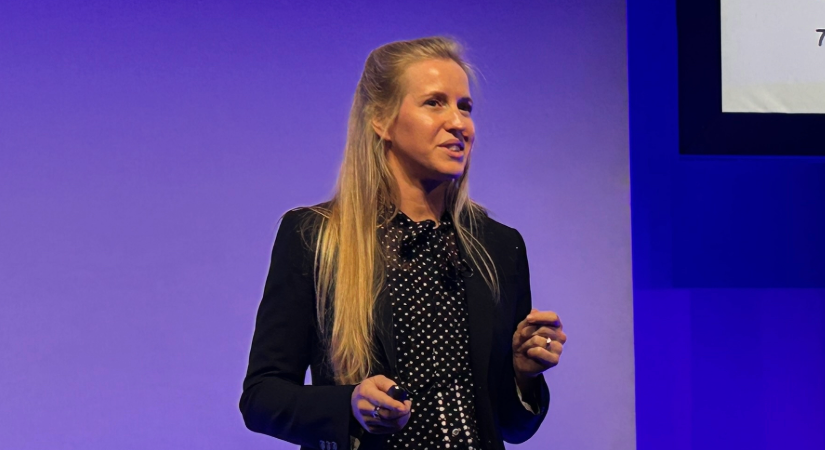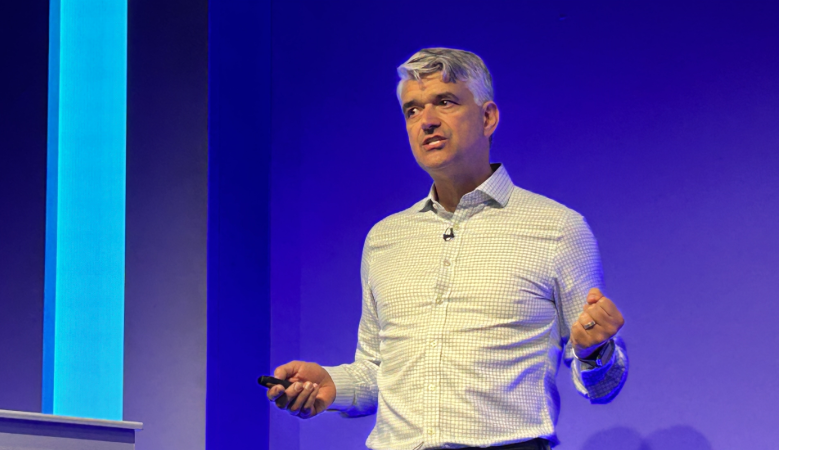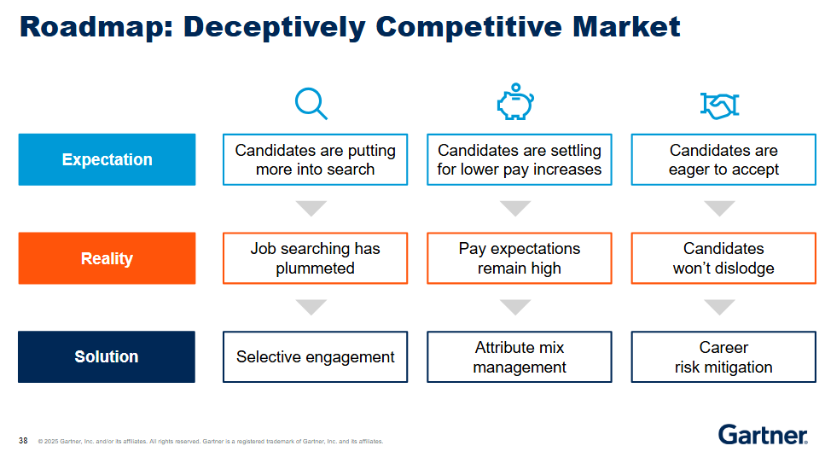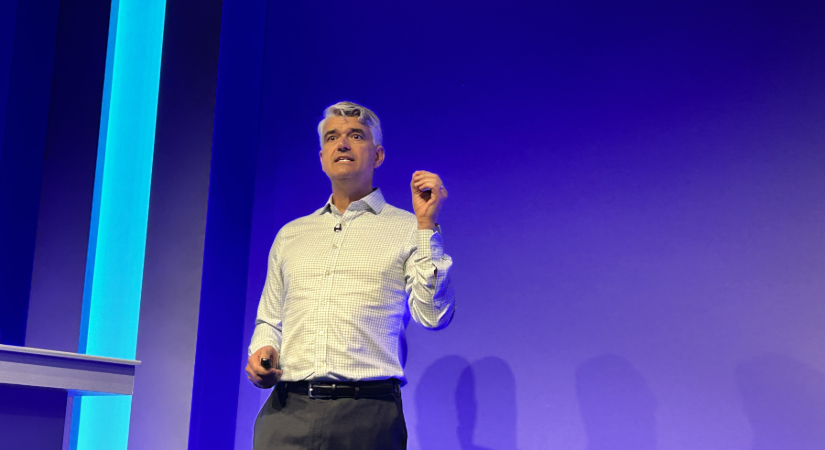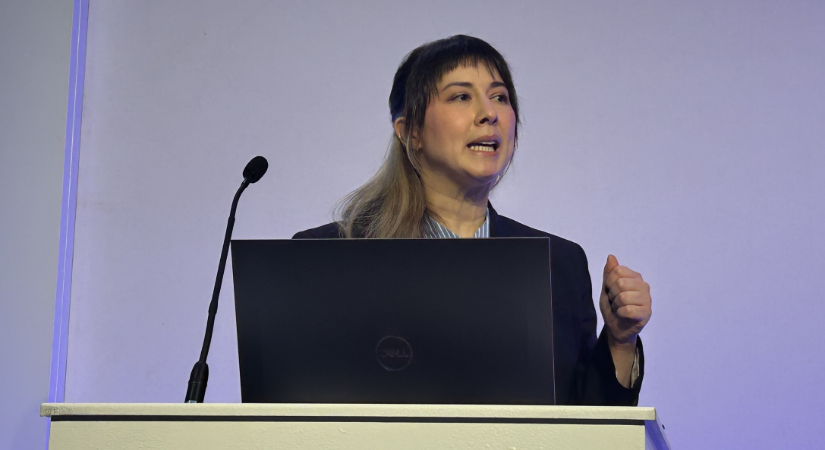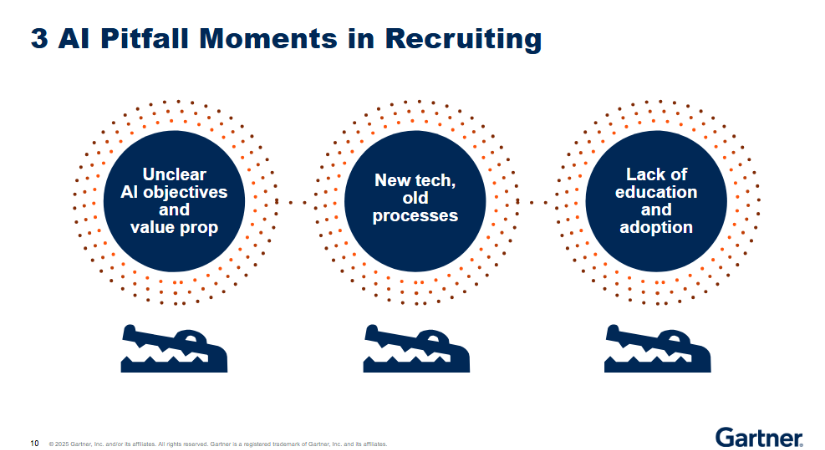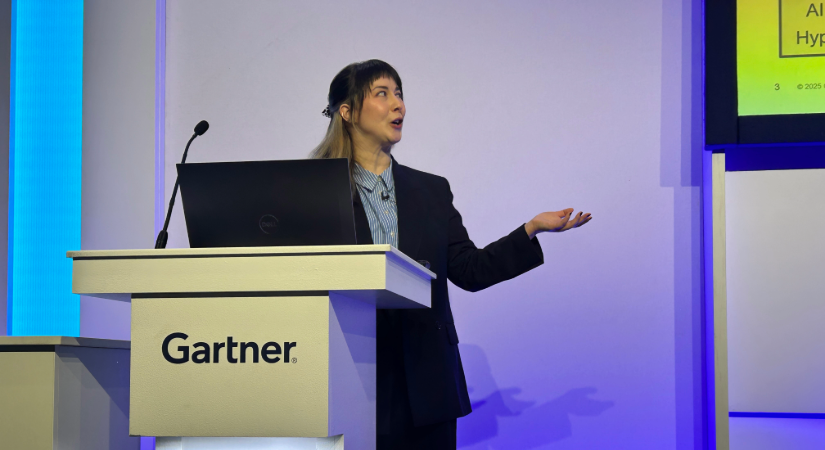LONDON, U.K., October 7, 2025
- Gartner client? Log in for personalized search results.
Gartner HR Symposium/Xpo, London: Day 1 Highlights
It’s not too late to join the conference
Overview
We are bringing you news and highlights from the Gartner HR Symposium/Xpo taking place today through Thursday, October 9 in London, U.K. Below is a collection of the key announcements and insights coming out of the conference.
On Day 1 from the conference, we are highlighting the Opening Keynote, sustaining employee productivity, candidate power in the job market, and AI in recruitment.
Be sure to check this page throughout the day for updates.
Key Announcements
Gartner Opening Keynote: Transforming How Work Gets Done: HR's New Domain in the AI Era
Presented by Harsh Kundulli, Vice President Analyst, Gartner, and Katie Sutherland, Director, Advisory, Gartner
CEOs plan to fuel the next wave of growth by taking cost out of the business, reinvesting in growth areas, and capitalizing on AI. In the opening keynote, Harsh Kundulli, Vice President Analyst, Gartner, and Katie Sutherland, Director, Advisory, Gartner, explored how HR can become a leader of transforming how work gets done across the enterprise by expanding from its traditional focus on the workforce to how work itself must change.
Key Takeaways
- “Despite increased investment in AI, Gartner data shows only one-in-three AI initiatives boosts productivity, one-in-five delivers measurable ROI, and just one-in-50 delivers disruptive value.”
- "Business units that redesign how work gets done, rather than just deploy AI and encourage employees to use it, are twice as likely to exceed revenue goals."
- “To build an organization fit for the AI era, CHROs need to shift their focus from the workforce to the work. HR needs to help their organizations decide what work needs to get done, how it gets done and where.”
- “Work is changing in three ways:
- Augment: Make existing work better
- Reengineer: Redesign workflows and functions
- Invent: Create new AI-based ways of working”
- “HR has a huge piece in all three work changes:
- HR’s role in augmenting work is to help the organization get to value faster by being more directive and guiding AI adoption.
- For reengineering work, HR can ensure redesigns happen responsibly, by getting ahead of talent and organizational ripple effects.
- To help their organization safely move into inventing new ways of working, HR should focus the conversation on timing, bridging the gap between now and the future.”
Journalists can receive additional information and/or request an interview with the Gartner expert by contacting Gerri Weinberger at gerri.weinberger@gartner.com.
The Key to Sustaining Employee Productivity: Equipping Managers for Changing Work Models
Presented by Shannon Wiest, Senior Principal, Advisory, Gartner
Many organizations have either asked employees to return to the office or are exploring hybrid work models in the hope of increasing organizational productivity. In this session, Shannon Wiest, Senior Principal, Advisory, Gartner, explored the immediate and long-term impact of transitioning work models on employee productivity, highlighted the essential role of managers during these transitions, and outlined how CHROs can equip managers for success.
Key Takeaways
“More than half of HR leaders say they’ve had to address concerns about remote employees not appearing productive; many organizations have implemented RTO mandates based on this perception.”
“In the short term, changing the work model, whether it’s bringing people back to the office or shifting to hybrid, doesn’t deliver a clear productivity boost.”
“Long-term, organizations that have implemented RTO mandates saw a 10% drop in intent to stay and a 19% increase in quiet quitting.”
“The three manager behaviors that made a difference when it comes to sustaining productivity during work model changes are:
Establishing evidence-based performance management
Promoting ongoing productivity dialogue
Recognizing and validating employee contributions.”
- “When managers effectively perform all three behaviors, employees are 3.2 times more likely to be highly productive, but only one in 10 employees say their manager is doing all three.”
Journalists can receive additional information and/or request an interview with the Gartner expert by contacting Gerri Weinberger at gerri.weinberger@gartner.com.
What to Do About Enduring Candidate Power in Today’s Employer’s Market
Presented by Dion Love, Vice President, Advisory, Gartner
Despite cooling labor market conditions, candidates remain increasingly selective about the jobs they apply for and accept. In this session, Dion Love, Vice President, Advisory at Gartner, shared new data on candidate preferences and behaviors to help CHROs and recruiting leaders compete for critical talent today.
Key Takeaways
- “Today’s market may be stagnant, but it’s also uncertain. Candidates are responding less to stagnation and more to that uncertainty.”
- “There is a mismatch between employer expectations and reality when it comes to job search, compensation and selection.”
- “Candidates spend less time job hunting: Organizations must prioritize engagements with critical talent and automate low-complexity, volume hiring.”
- “Candidates remain firm on compensation and they’re not settling: Employers must refine their employee value proposition (EVP) and amplify brand differentiators to attract and retain target talent.”
- “Candidates are hesitant to change roles: To mitigate risk, organizations should help recruiters act as career coaches, emphasizing benefits of moving and clarifying risks of staying put.”
Journalists can receive additional information and/or request an interview with the Gartner expert by contacting Gerri Weinberger at gerri.weinberger@gartner.com.
Avoiding AI Pitfalls in Your Recruitment Technology Stack
Presented by Emi Chiba, Senior Principal Analyst, Gartner
Organizations that leverage AI in their recruitment technology stack are able to drive efficiency, improve candidate experience and secure successful outcomes for their business. In this session, Emi Chiba, Senior Principal Analyst, Gartner, reviewed the leading talent acquisition AI use cases and shared how to avoid some of the common pitfalls.
Key Takeaways
- “74% of recruiting executives indicated they are using AI features in their technology stack, showing the pervasiveness of AI use across the recruiting life cycle.”
- “The key impacts being promised by using AI in talent acquisition include improved UX, quality of talent pipeline, efficiency, time reduction, bias mitigation, and quality of hire.”
- “Despite being promised significant ROI by using AI in recruitment, 75% of CHROs experience regret regarding their technology purchasing decisions.”
- “Three AI pitfalls to watch out for in recruiting are:
- Unclear AI objectives and value proposition: 42% of HR leaders reported that their HR technology strategy does not meet current or future business needs.
- New tech, old processes: 71% of HR leaders shared that heavy transactional demands restrict HR function from offering more strategic value.
- A lack of education and adoption: 65% of HR leaders said that limited digital skills are preventing their HR function from evolving into an AI‑first operation.”
- “To avoid these potential AI pitfalls, HR leaders should:
- Establish AI use cases and define outcomes
- Update processes to align with experience, tech and business outcomes
- Focus on continuous AI learning and readiness.”
Journalists can receive additional information and/or request an interview with the Gartner expert by contacting Gerri Weinberger at gerri.weinberger@gartner.com.

It’s not too late to join the conference
Check back tomorrow for more updates from the conference.
Media contact
Mary Baker
Gartner
mary.baker@gartner.com
Gerri Weinberger
Gartner
gerri.weinberger@gartner.com
Latest releases
About Gartner
Gartner (NYSE: IT) delivers actionable, objective business and technology insights that drive smarter decisions and stronger performance on an organization’s mission-critical priorities. To learn more, visit gartner.com.
